Waves of plastic
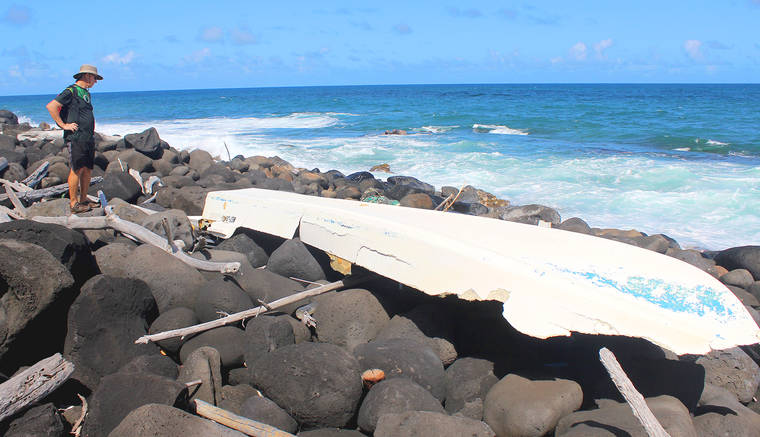
Jessica Else/The Garden Island
Skip Schaefer paces off the length of a boat hull wrecked on the rocks on a Kauai eastside beach.
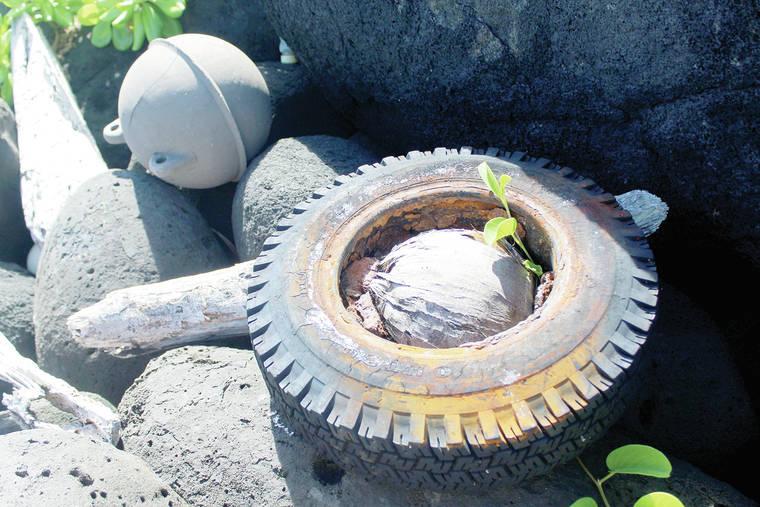
Jessica Else/The Garden Island
A coconut sprouts inside an abandoned tire on one of Kauai’s rocky shorelines.

Jessica Else/The Garden Island
Nets are tangled in the rocks along some of Kauai’s shorelines.
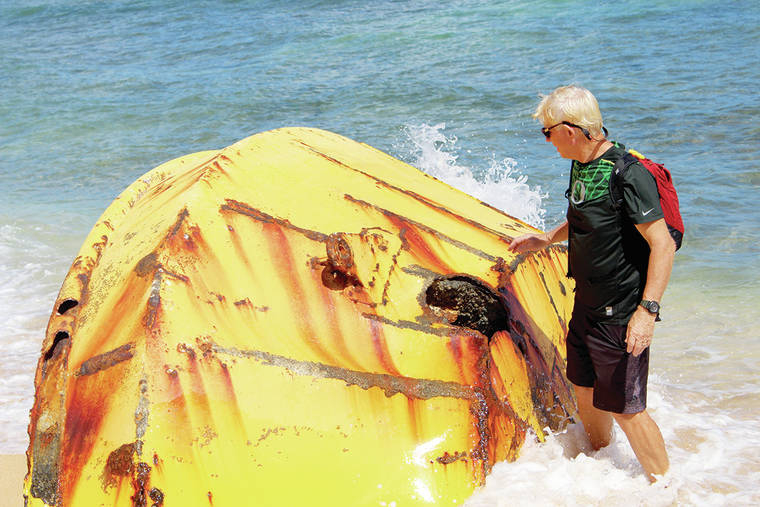
Jessica Else/The Garden Island
Skip Schaefer examines the unidentified floating object (UFO) that’s been on one of Kauai’s east side beaches for months.
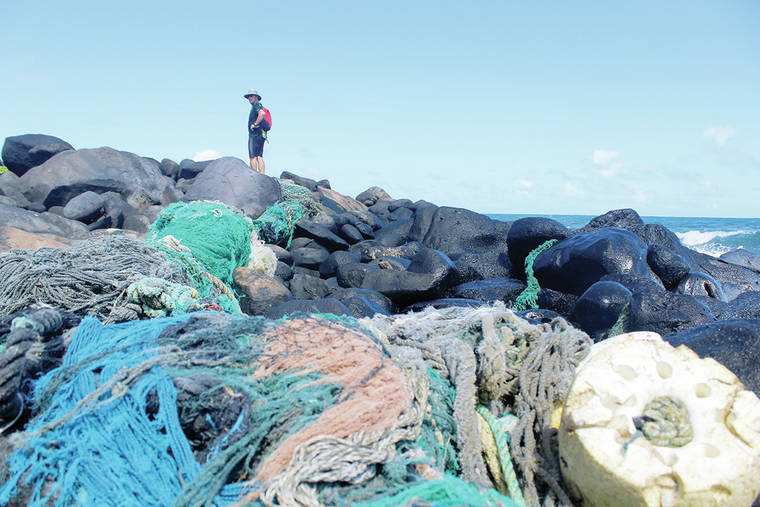
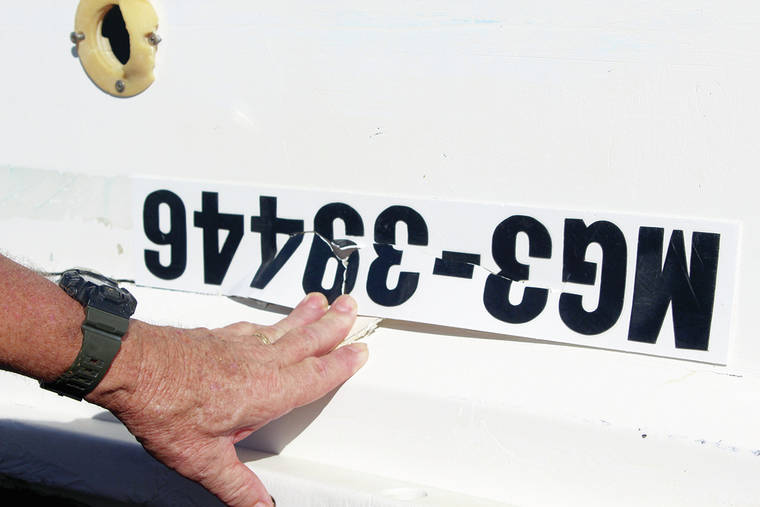
Jessica Else/The Garden Island
Skip Schaefer points out the markings on a boat hull he found wrecked on one of Kauai’s east side shores.

Jessica Else/The Garden Island
Plastic and marine debris from around the world is washed onto Kauai’s shores.
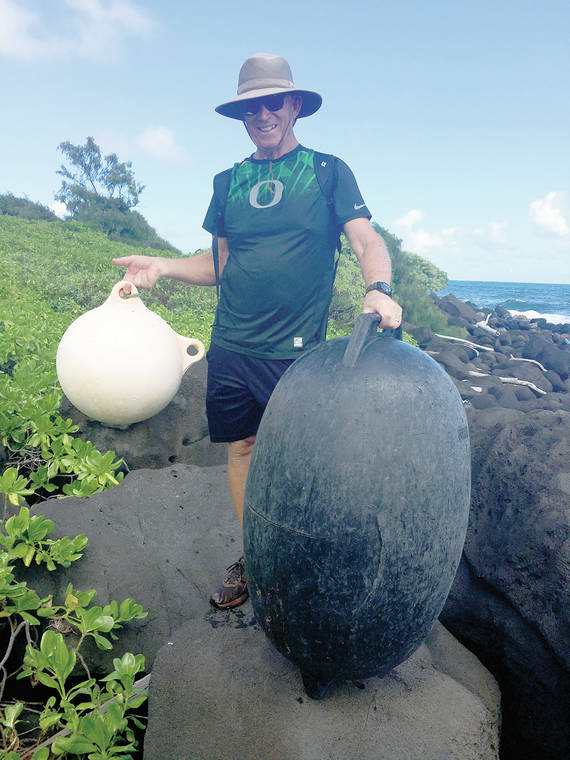
Jessica Else/The Garden Island
Skip Schaefer holds up buoys that he’s found washed up on Kauai’s east side.
ALIOMANU Skip Schaefer gets souvenirs from around the world delivered to his backyard.
ALIOMANU — Skip Schaefer gets souvenirs from around the world delivered to his backyard.
That’s if you include the area Schaefer roams around his actual backyard, the stretches of beach around Aliomanu on the eastside. His house overlooks the bay and he walks the beach daily.
Schaefer loves adventure and when he’s not traveling internationally with his family, he hops for miles along the rocky shoreline to get to places most people don’t ever reach — but plastic does.
“We get stuff from all over the place,” Schaefer said during a recent hike out to a remote part of the shoreline south of Moloaa Bay, holding up a mangled, blue plastic storage container with what could be Japanese characters along the side. “This isn’t from here.”
That one piece of marine debris has been exposed to the elements long enough to be partly smashed and mostly faded into a light blue. It’s not the only piece of plastic that most likely originated from Japan. The markings on several other pieces of debris point to the western Pacific as well.
Objects from the area have been washing up on Kauai shores since the 2011 Fukushima earthquake and tsunami.
In 2014, Kauai County put some of that debris on display at the Port Allen Marina Center. Specifically, that debris is a buoy from Iwaki City that traveled the some 6,000 miles from Japan to Kauai. It was found in 2013 in waters west of Kauai and is still on display in Port Allen.
At Schaefer’s home shoreline, expatriate plastic is just one of the many types of debris lodged in the rocks. There’s most of a boat hull out there, with the tag “MG3-39446”. It’s bleached, broken and about 20 feet long.
Nets are caught throughout the shoreline, tangled piles that have washed up from the Pacific and snagged in the rocks. They will have to be cut into pieces to be removed.
“The boat’s light enough to get out of here by helicopter,” Schaefer said. “It’s been out here for months.”
In September, Kauai’s Surfrider Chapter partnered with Timbers Resorts Hokuala Kauai and Jack Harter Helicopters to remove 55 supersacks of plastic and nets from the shoreline — capacity volumes on those are up to 88 cubic feet and they’re rated to hold around 5,500 pounds.
Volunteers collected all of that plastic, net, rope and other debris.
Schaefer picks up what he can when he’s out and about, but the amount of it, the weight of it and the remoteness of where it’s located make the mission to clean up the shoreline difficult. Concerted efforts like the Surfrider cleanup help.
“They’ve got a good start,” Schaefer said. “But they only got about one-third of it.”
Barbara Wiedner of Surfrider Kauai said they’re looking forward to doing the project again. More debris typically washes up during winter months because of seasonal ocean activity.
“We’ll wait for the swell to change,” Weidner said. “We’re hoping to get back over there in the spring or summer.”
Derelict, abandoned or lost fishing gear come from all over the world and make their way to Kauai on the Pacific Ocean currents. That’s if they don’t get snagged on a shipwreck or a reef first.
The value in removing these things from the shoreline is that they won’t be pulled back into the ocean, where they can damage the ecosystem and marine life. Invasive species can also hitch a ride on some of the debris and potentially establish on Kauai, or wherever they land.
Identifying markers can help researchers, historians and others locate the origin of these items.
Schaefer has sent a few of the pieces he’s collected to a friend who speaks Japanese for translation and is hoping to learn more about what he’s found.
The other curious piece of marine debris that has Schaefer’s attention is the unidentified floating object (UFO), which landed on the beach at South Aliomanu in May.
Five months later, the massive metal object has sunk halfway into the sand. Schaefer said someone will have to cut the UFO into pieces to get it off the beach, and he has been working with a neighbor to provide access for the project.
The Department of Land and Natural Resources Division of Boating and Ocean Recreation is the state entity in charge of getting the UFO off the beach. After about two months of searching, they’ve secured a bid for the project and anticipate removal costs to be about $15,000.
Spokespeople with the DLNR-DOBOR didn’t provide the name of the company that landed the project and said there is no firm timeline for completing the work.
Some of the debris is generated on the island, like rusted tires and discarded water bottles, but the majority is from somewhere else.
“I see all sorts of stuff out here from all over, I don’t know how many places, but it gets washed up with the waves from somewhere,” Schaefer said.
•••
Jessica Else, environment reporter, can be reached at 245-0452 or at jelse@thegardenisland.com

